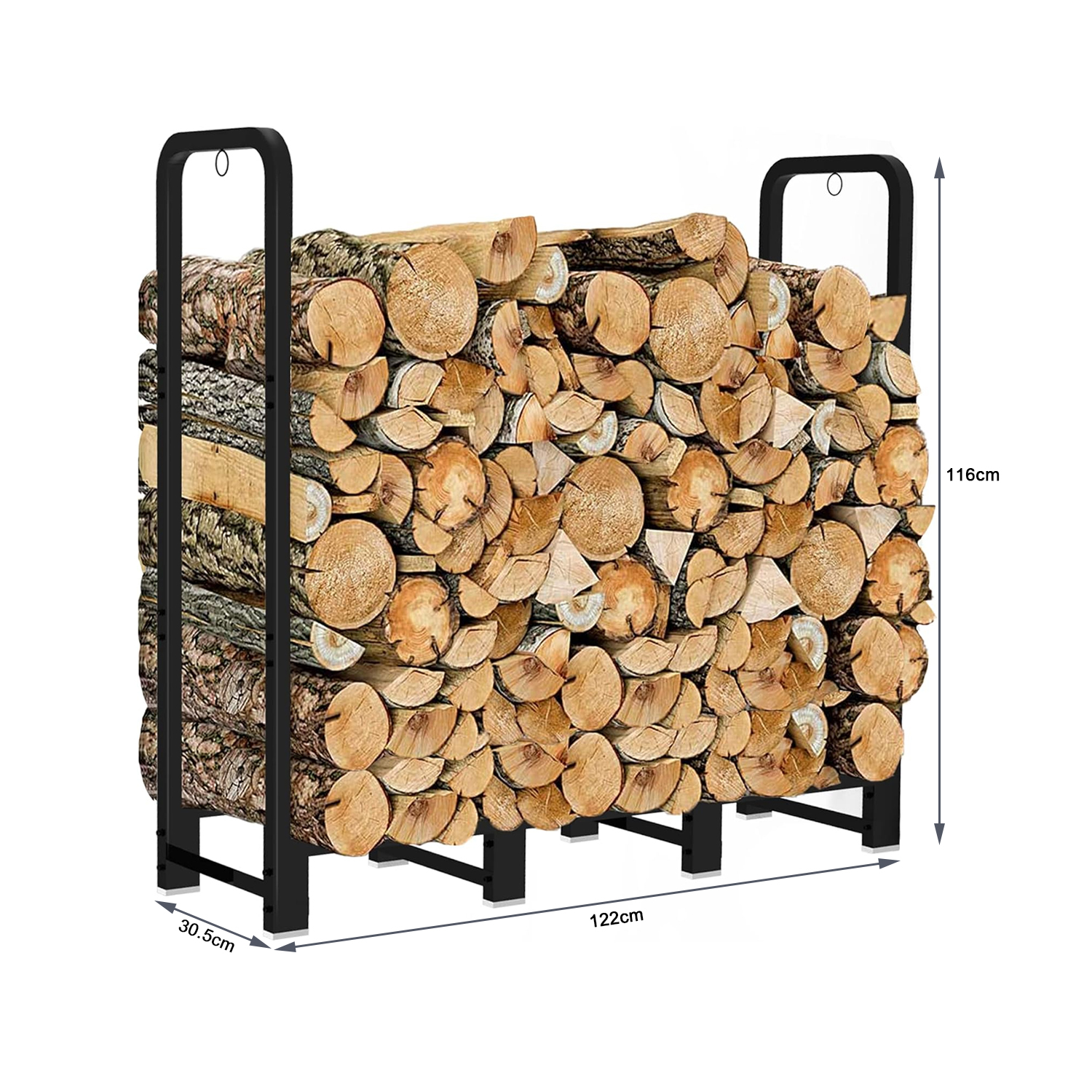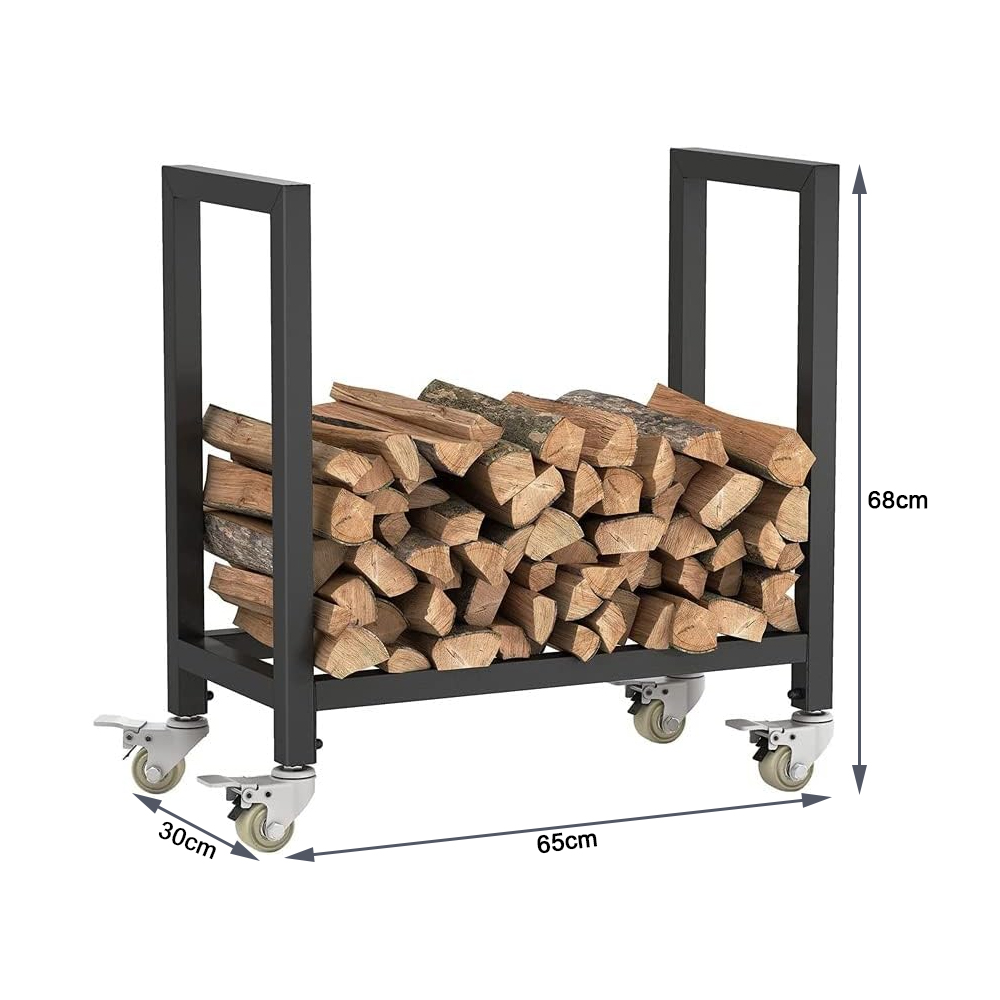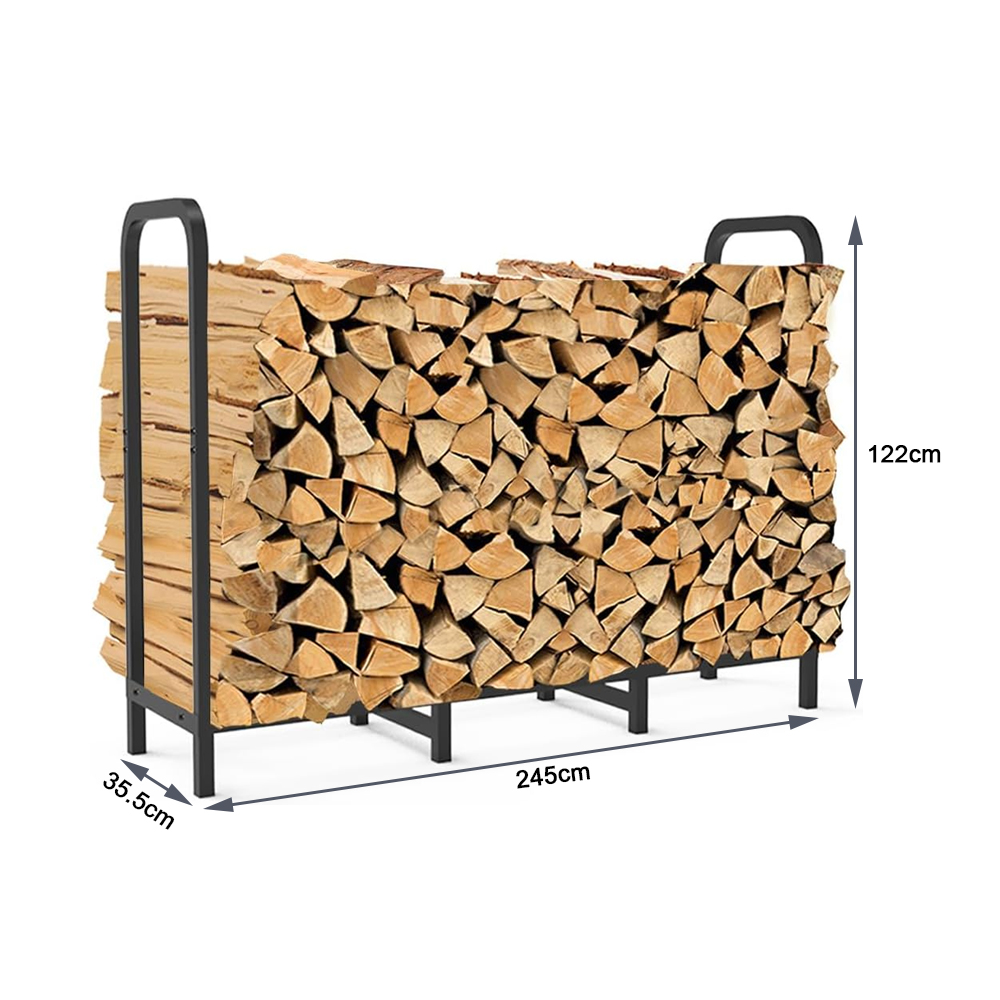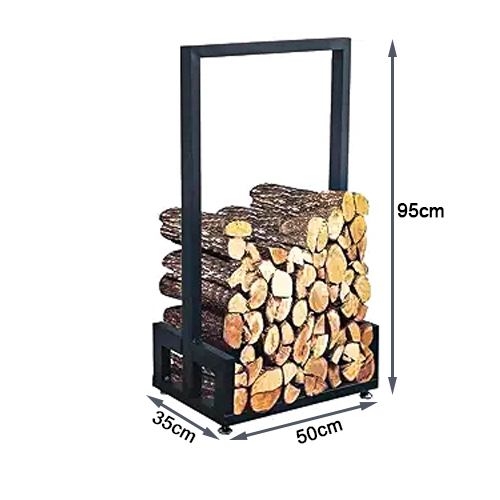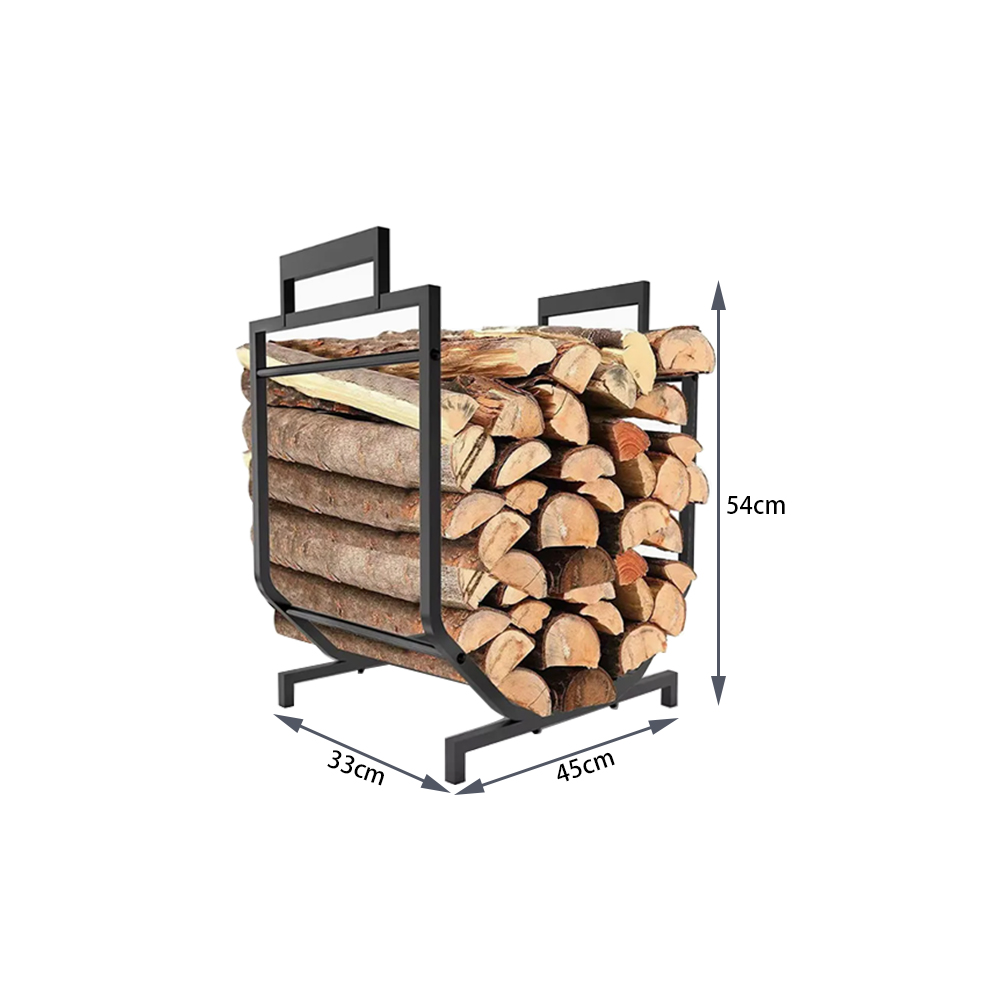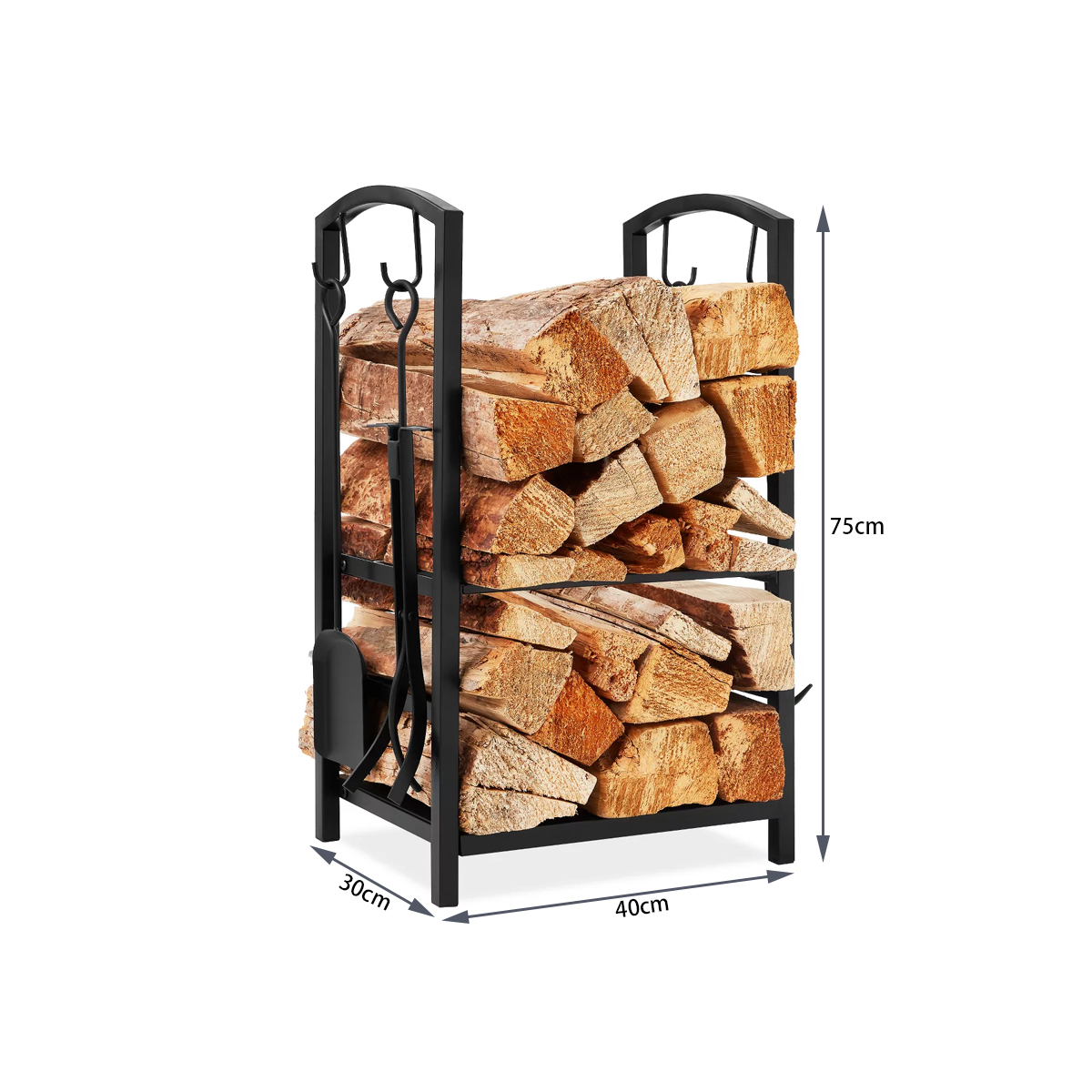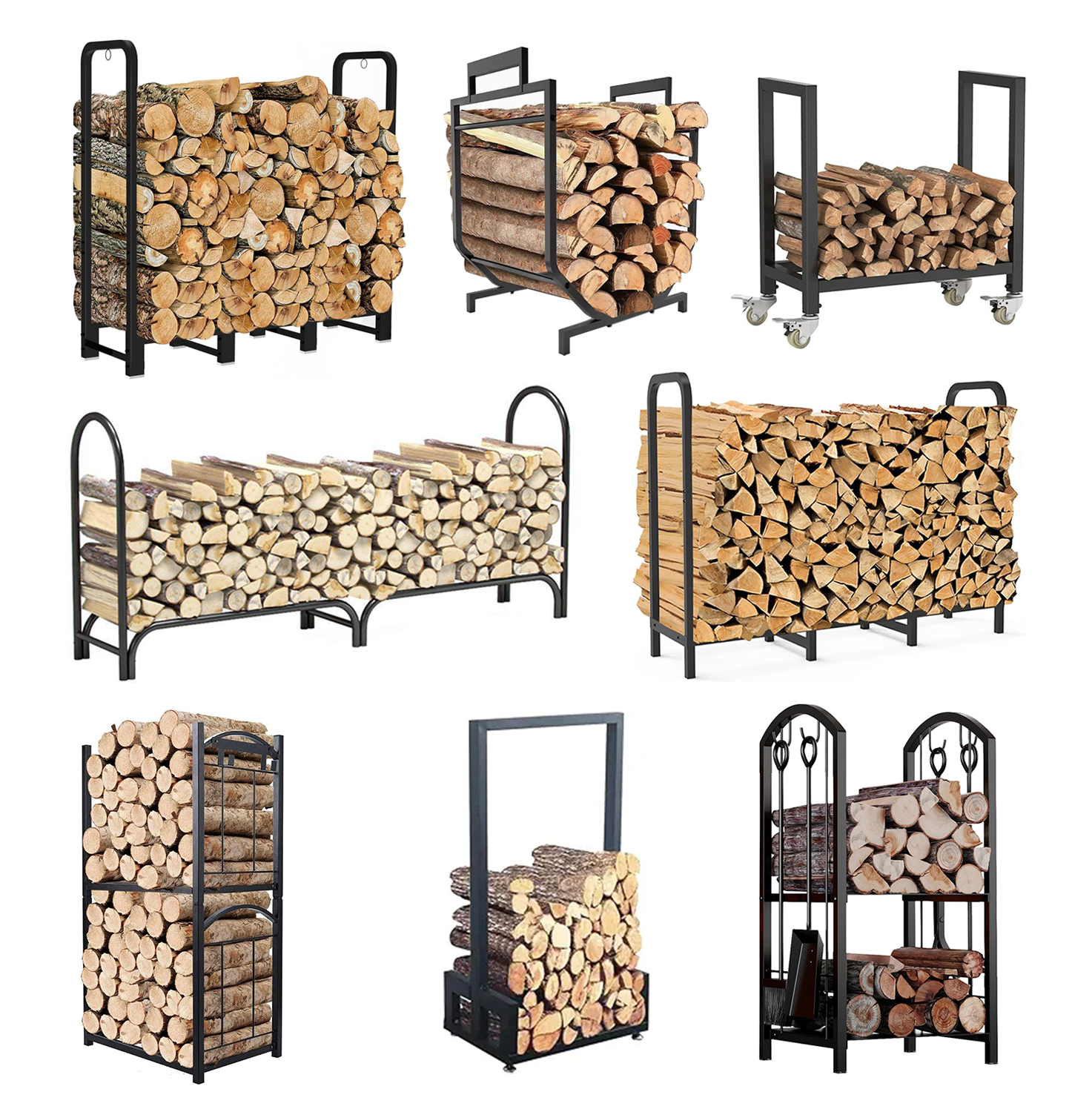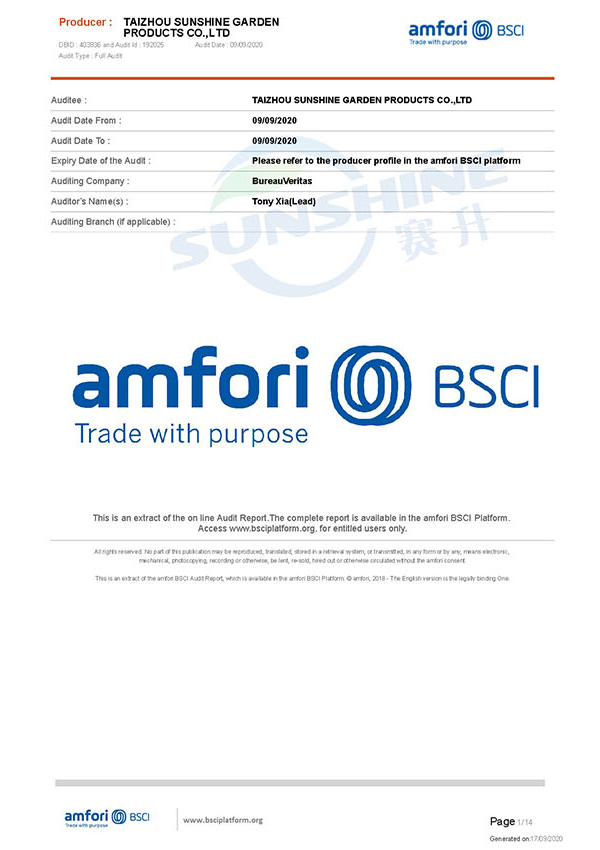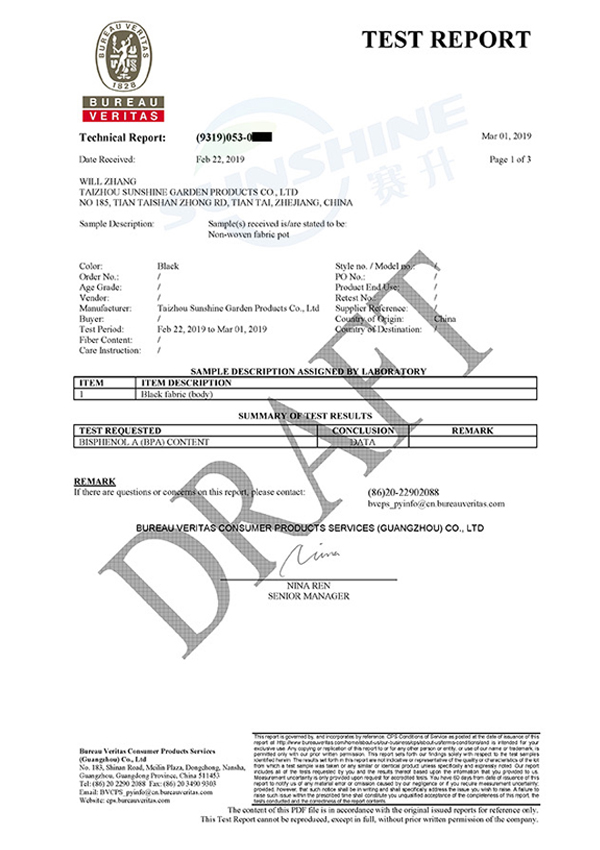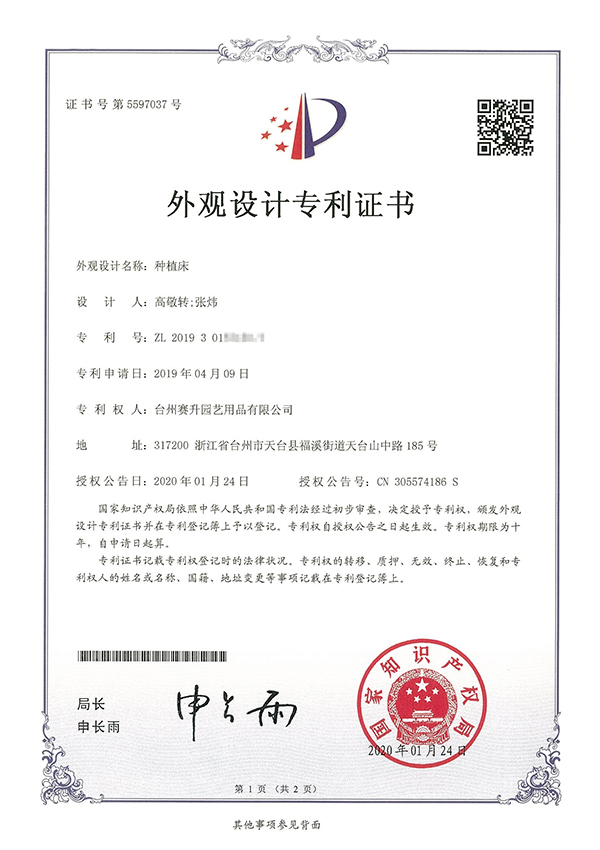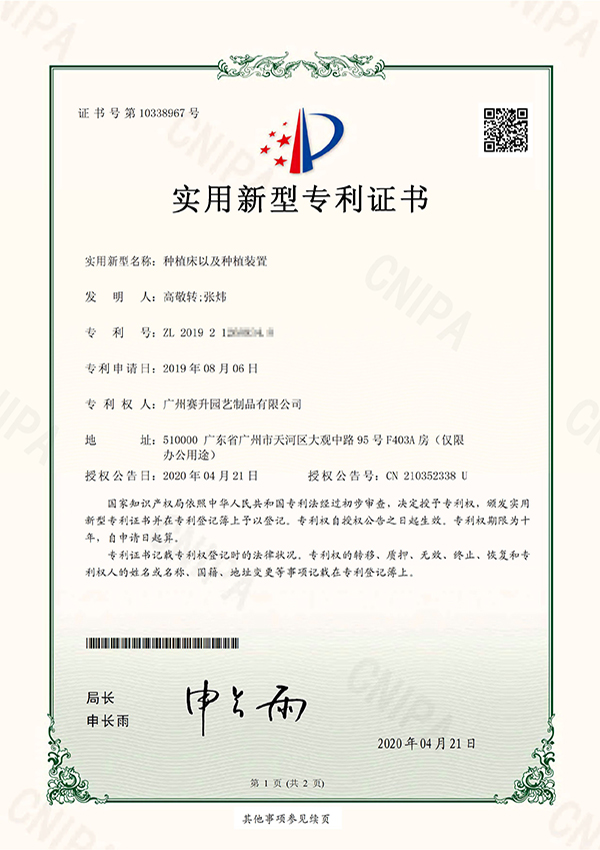
Functionality
* Ventilation: Elevates wood off the ground to promote airflow, reducing moisture and mold growth.
* Capacity: Designed to hold large quantities of firewood, such as logs for fireplaces or outdoor use.
* Portability: Some models are lightweight and easy to assemble, though stability is prioritized to prevent tipping.
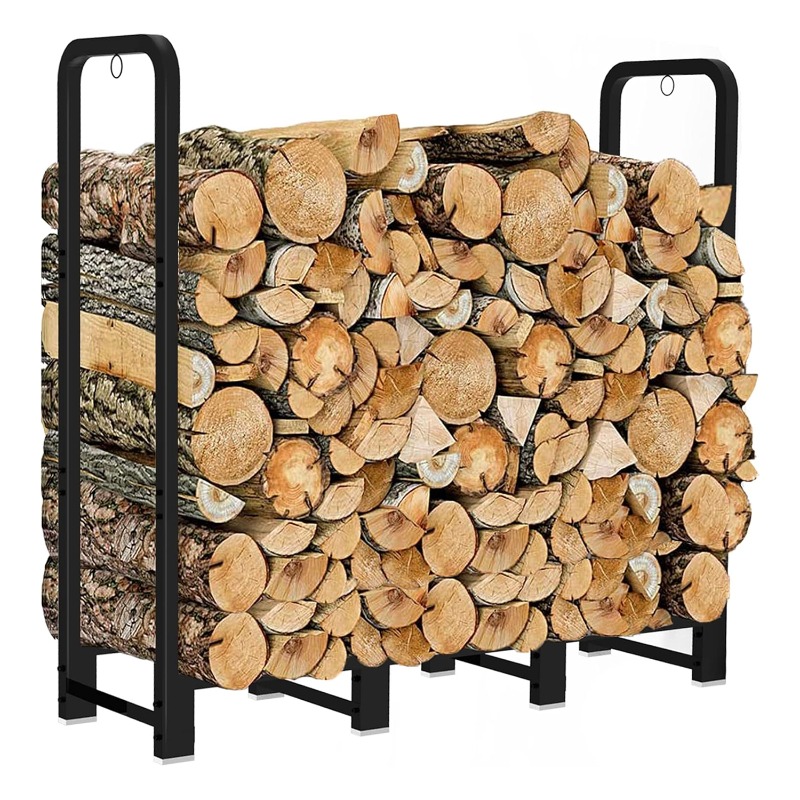
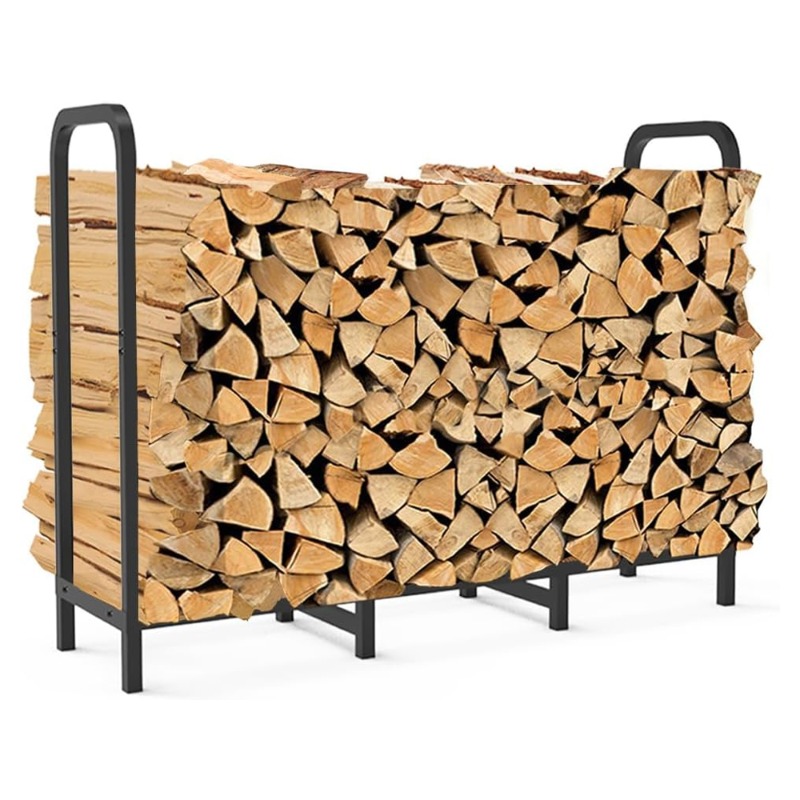
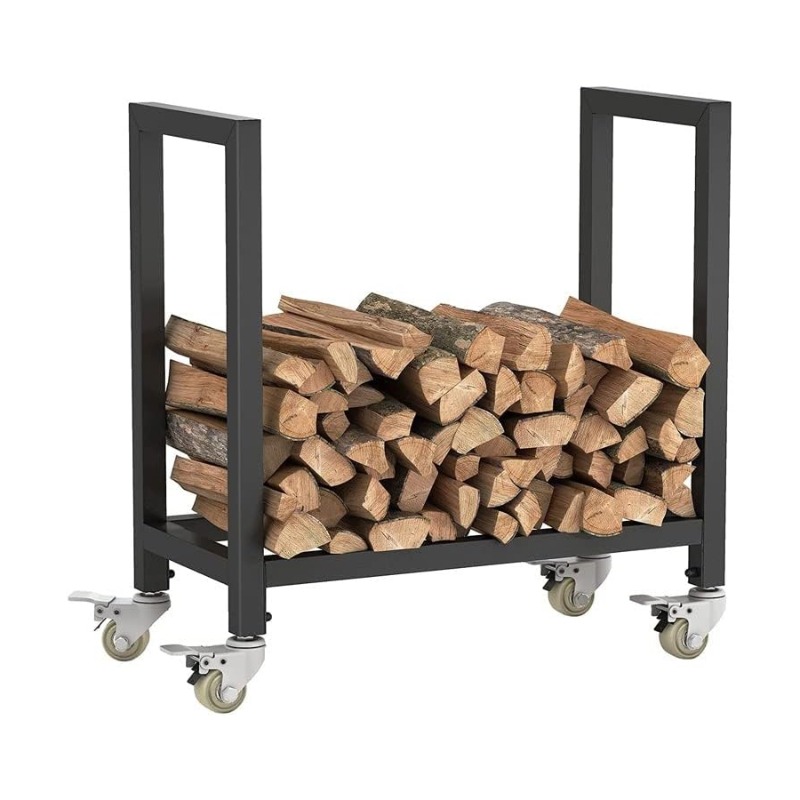
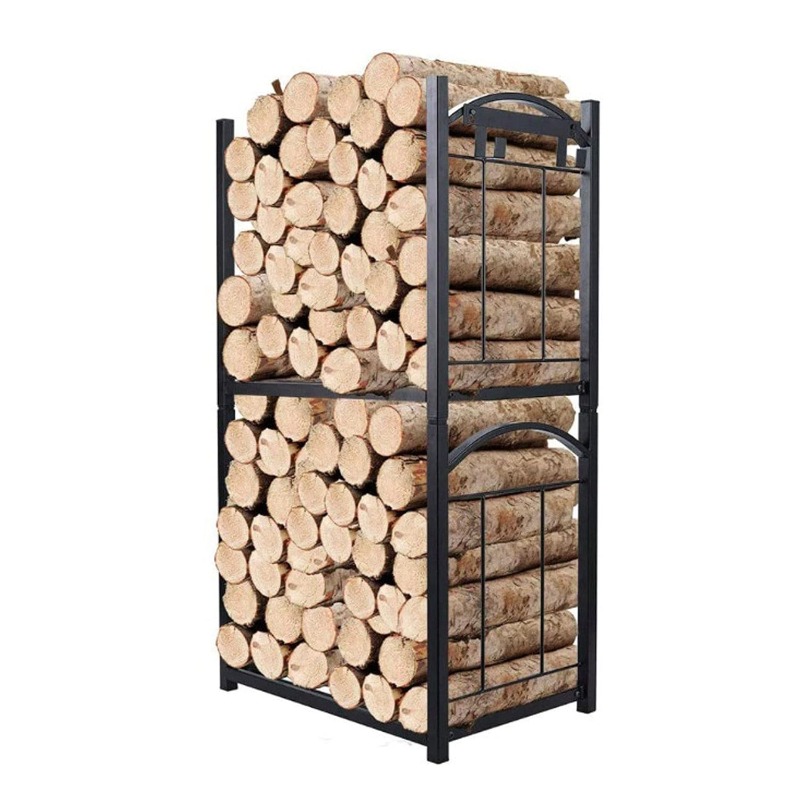
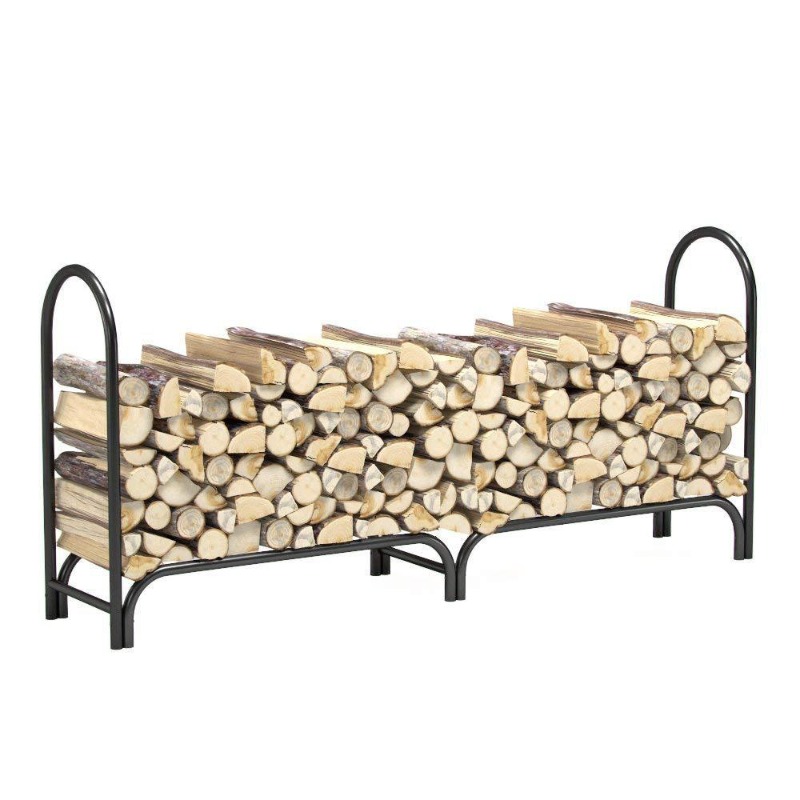
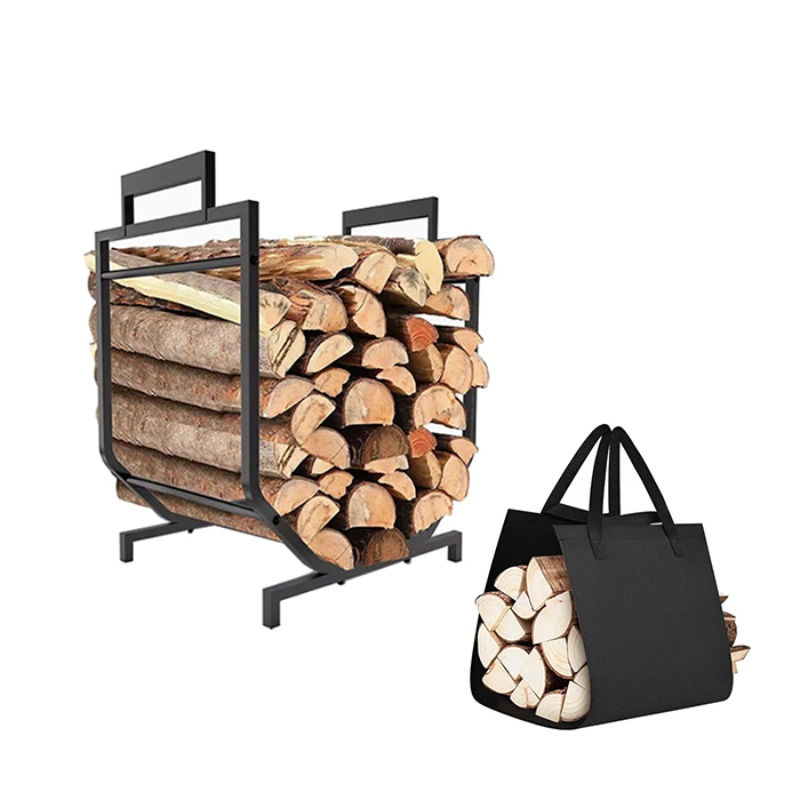
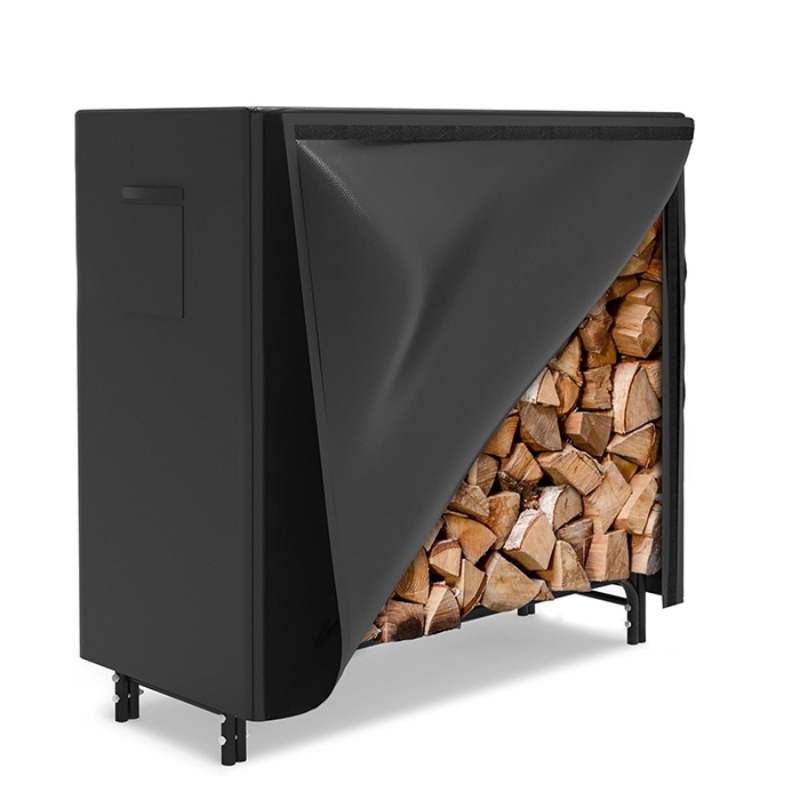
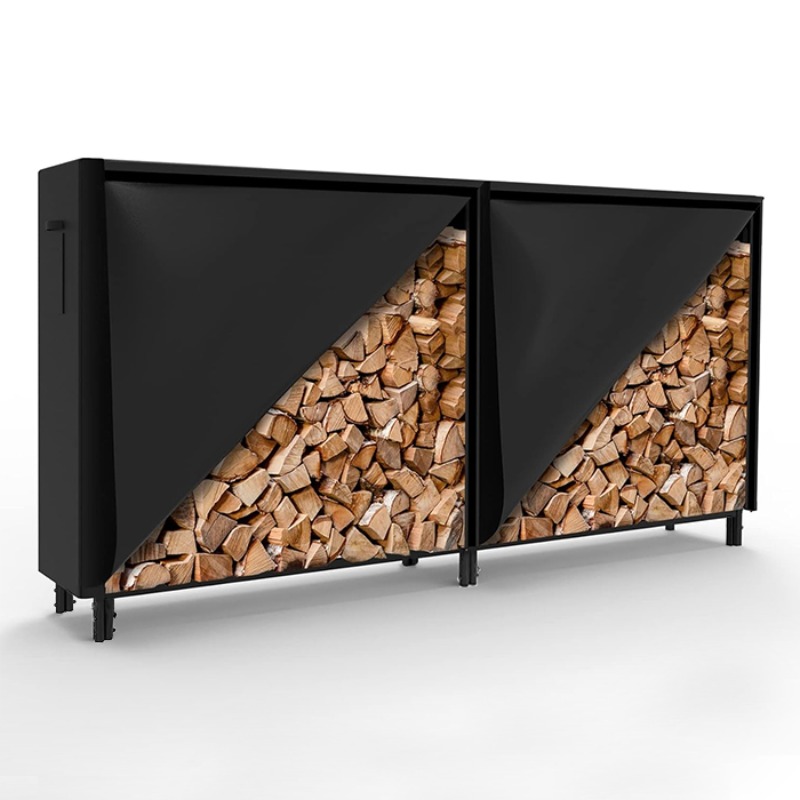
Application
Home heating, camping fire, pizza kiln/wood oven fuel storage, etc.
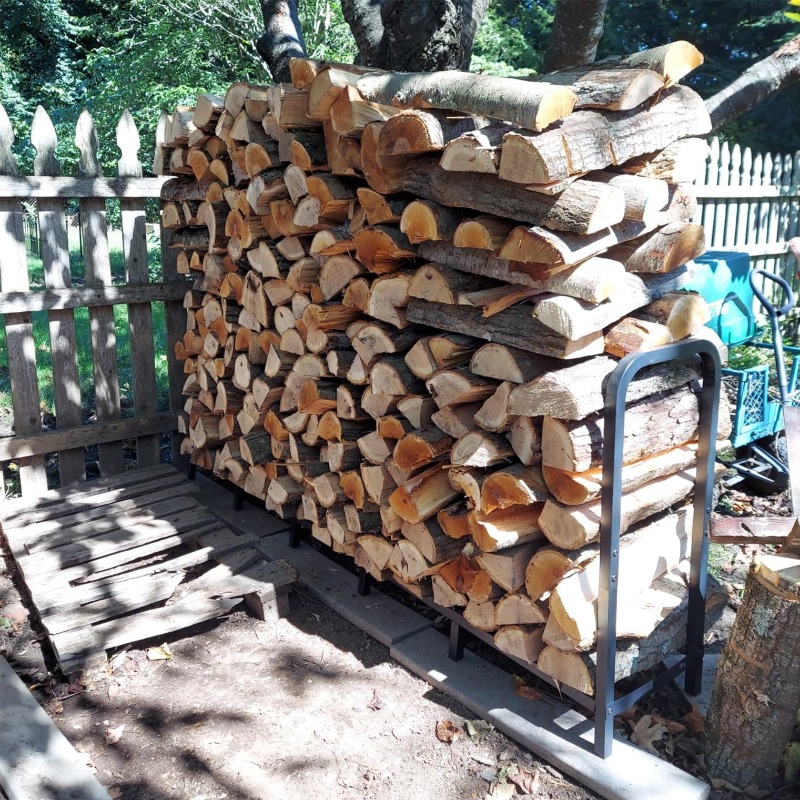
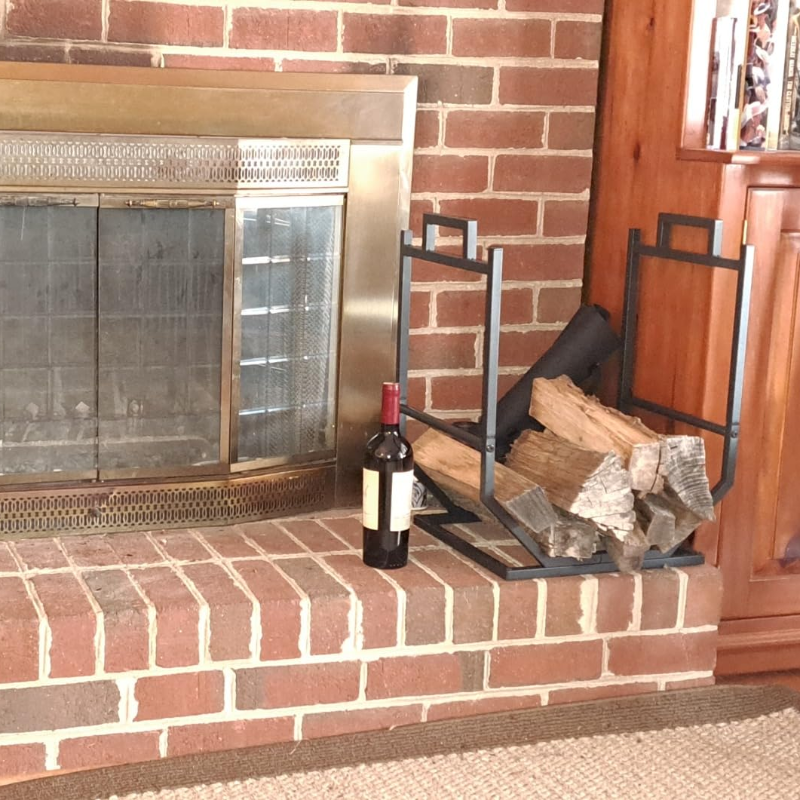
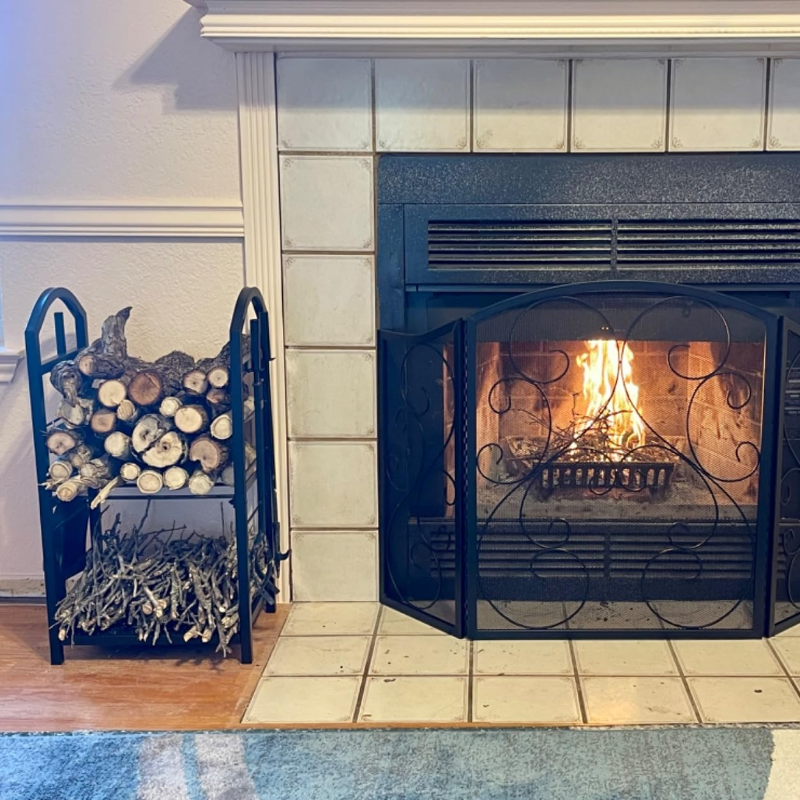
Safety advice
Keep away from the source of open fire to avoid wood chip accumulation causing fire; Remove residue regularly and keep dry.
Sunshine Garden is a manufacturer based in China with 14 years of experience in OEM & ODM Manufacturing and developing,specialist for Home Garden living solutions.
Offers everything you need to build complete gardening and hydroponic systems.
.png) CMH Sodium Light has gained widespread adoption in horticultural, commercial, and industrial applications due to its high luminous efficiency, stable color output, and extended lifespan. However, its performance is closely tied to the stability of the electrical supply. Voltage fluctuations and frequency variations can significantly influence the lamp’s operation, affecting light output, efficiency, and long-term reliability. Understanding the adaptability of CMH Sodium Light to these variations is essential for both manufacturers and end-users who seek consistent performance in environments with variable electrical conditions.
Impact of Voltage Fluctuations
Voltage fluctuations are a common challenge in many electrical systems, ranging from minor deviations to sudden spikes or drops. CMH Sodium Light is designed to operate within a specified voltage range. When the voltage falls below this range, the lamp may fail to ignite properly or deliver insufficient brightness, compromising performance. Conversely, high voltage can overstress the arc tube and ballast, causing excessive heat generation, accelerated wear, and potential lamp failure. Repeated exposure to voltage irregularities can reduce lamp life, increase maintenance requirements, and affect the overall cost-effectiveness of the lighting system.
Frequency Variation and Lamp Performance
The electrical frequency, typically 50 Hz or 60 Hz depending on the region, also plays a vital role in lamp operation. Minor deviations are usually tolerable, but substantial frequency variations can interfere with the ballast’s regulation of current and voltage. This may cause flickering, unstable arc formation, or inconsistent luminous output. Advanced ballasts in CMH Sodium Lights are designed to compensate for such variations, maintaining steady light output and protecting the lamp’s internal components. Proper matching of lamp specifications with regional frequency standards is crucial to avoid operational disruptions and ensure efficiency.
Ballast Technology and Electrical Adaptation
The ballast is the key element that enables CMH Sodium Light to handle voltage and frequency variations. Modern electronic ballasts actively monitor incoming electrical conditions and regulate current to stabilize lamp operation. They protect against overvoltage, undervoltage, and frequency-induced fluctuations. Magnetic ballasts, while less sophisticated, are robust and capable of tolerating standard regional electrical variations. Choosing the correct ballast type is critical to ensure that CMH Sodium Light maintains consistent performance, reduces energy losses, and improves service life.
Protective Measures for Users
For environments with an unstable electrical supply, additional protective measures can enhance the lamp’s adaptability. Voltage stabilizers, surge protectors, or uninterruptible power supplies (UPS) can safeguard against sudden spikes or drops, ensuring reliable operation. Proper installation practices, including correct ballast selection and compliance with manufacturer guidelines, further improve resilience to electrical fluctuations. Users must also consider environmental conditions, such as temperature and humidity, as these can compound the effects of electrical instability and affect overall lamp performance.
Long-Term Implications
Electrical adaptability has long-term implications for efficiency, maintenance, and cost. Lamps that can tolerate minor fluctuations without damage reduce downtime and maintenance frequency, providing consistent illumination and reducing operational costs. Conversely, lamps exposed to uncontrolled voltage or frequency variations may experience accelerated wear, diminished light quality, and shortened lifespan, ultimately affecting the reliability of lighting systems in critical applications such as horticulture or industrial workspaces.
CMH Sodium Light demonstrates strong adaptability to electrical fluctuations, largely due to advanced ballast technology and engineered tolerances for voltage and frequency variations. While minor deviations are well-managed, prolonged electrical irregularities can affect performance and longevity. Implementing protective measures, selecting compatible ballasts, and adhering to manufacturer specifications ensure consistent, efficient, and safe operation. By understanding and managing electrical variability, users can improve the benefits of CMH Sodium Light, maintaining high-quality illumination across diverse applications and challenging environments.
CMH Sodium Light has gained widespread adoption in horticultural, commercial, and industrial applications due to its high luminous efficiency, stable color output, and extended lifespan. However, its performance is closely tied to the stability of the electrical supply. Voltage fluctuations and frequency variations can significantly influence the lamp’s operation, affecting light output, efficiency, and long-term reliability. Understanding the adaptability of CMH Sodium Light to these variations is essential for both manufacturers and end-users who seek consistent performance in environments with variable electrical conditions.
Impact of Voltage Fluctuations
Voltage fluctuations are a common challenge in many electrical systems, ranging from minor deviations to sudden spikes or drops. CMH Sodium Light is designed to operate within a specified voltage range. When the voltage falls below this range, the lamp may fail to ignite properly or deliver insufficient brightness, compromising performance. Conversely, high voltage can overstress the arc tube and ballast, causing excessive heat generation, accelerated wear, and potential lamp failure. Repeated exposure to voltage irregularities can reduce lamp life, increase maintenance requirements, and affect the overall cost-effectiveness of the lighting system.
Frequency Variation and Lamp Performance
The electrical frequency, typically 50 Hz or 60 Hz depending on the region, also plays a vital role in lamp operation. Minor deviations are usually tolerable, but substantial frequency variations can interfere with the ballast’s regulation of current and voltage. This may cause flickering, unstable arc formation, or inconsistent luminous output. Advanced ballasts in CMH Sodium Lights are designed to compensate for such variations, maintaining steady light output and protecting the lamp’s internal components. Proper matching of lamp specifications with regional frequency standards is crucial to avoid operational disruptions and ensure efficiency.
Ballast Technology and Electrical Adaptation
The ballast is the key element that enables CMH Sodium Light to handle voltage and frequency variations. Modern electronic ballasts actively monitor incoming electrical conditions and regulate current to stabilize lamp operation. They protect against overvoltage, undervoltage, and frequency-induced fluctuations. Magnetic ballasts, while less sophisticated, are robust and capable of tolerating standard regional electrical variations. Choosing the correct ballast type is critical to ensure that CMH Sodium Light maintains consistent performance, reduces energy losses, and improves service life.
Protective Measures for Users
For environments with an unstable electrical supply, additional protective measures can enhance the lamp’s adaptability. Voltage stabilizers, surge protectors, or uninterruptible power supplies (UPS) can safeguard against sudden spikes or drops, ensuring reliable operation. Proper installation practices, including correct ballast selection and compliance with manufacturer guidelines, further improve resilience to electrical fluctuations. Users must also consider environmental conditions, such as temperature and humidity, as these can compound the effects of electrical instability and affect overall lamp performance.
Long-Term Implications
Electrical adaptability has long-term implications for efficiency, maintenance, and cost. Lamps that can tolerate minor fluctuations without damage reduce downtime and maintenance frequency, providing consistent illumination and reducing operational costs. Conversely, lamps exposed to uncontrolled voltage or frequency variations may experience accelerated wear, diminished light quality, and shortened lifespan, ultimately affecting the reliability of lighting systems in critical applications such as horticulture or industrial workspaces.
CMH Sodium Light demonstrates strong adaptability to electrical fluctuations, largely due to advanced ballast technology and engineered tolerances for voltage and frequency variations. While minor deviations are well-managed, prolonged electrical irregularities can affect performance and longevity. Implementing protective measures, selecting compatible ballasts, and adhering to manufacturer specifications ensure consistent, efficient, and safe operation. By understanding and managing electrical variability, users can improve the benefits of CMH Sodium Light, maintaining high-quality illumination across diverse applications and challenging environments.
.jpg) CMH Sodium Light is widely used in horticultural, industrial, and commercial applications due to its high luminous efficiency and stable performance. However, like all high-intensity discharge lighting, it generates considerable heat during operation. Effective heat management is critical, as excessive temperature can reduce lamp lifespan, decrease luminous output, and potentially compromise safety. Understanding the mechanisms of heat generation and evaluating the effectiveness of cooling strategies is essential for both manufacturers and end-users seeking suitable performance.
Heat Generation in CMH Sodium Lights
The primary sources of heat in CMH Sodium Lights are the arc tube and ballast. During operation, the electrical energy supplied to the lamp is partially converted into visible light, while the remaining energy manifests as thermal energy. High temperatures are especially prominent in the arc tube, which operates at several hundred degrees Celsius. Additionally, the ballast, which regulates voltage and current to maintain stable light output, also produces heat that contributes to the overall thermal load of the system. Without adequate thermal control, this heat can accumulate, causing elevated surface temperatures on the lamp housing and surrounding components.
Impact of Heat on Performance and Longevity
Excessive heat can have several adverse effects on CMH Sodium Lights. Elevated temperatures accelerate the degradation of phosphor coatings and internal components, causing faster lumen depreciation and color shift. In bad cases, prolonged exposure to high heat can cause structural damage to the arc tube or lens, resulting in reduced operational lifespan or catastrophic failure. Heat also impacts electrical components in the ballast and wiring, potentially causing reduced efficiency or safety hazards. Therefore, controlling thermal output is not only a matter of efficiency but also a critical factor in maintaining the reliability and safety of the lamp.
Cooling and Heat Dissipation Design
Effective cooling strategies are integral to ensuring stable operation. Most CMH Sodium Lights incorporate heat sinks, aluminum housings, or finned structures to facilitate passive heat dissipation. Convection-driven airflow around the lamp aids in transferring heat away from critical components. Some advanced designs use active cooling, such as integrated fans or forced-air circulation, to maintain lower operating temperatures even in high-intensity or continuous-use scenarios. Proper thermal management ensures that the lamp maintains suitable luminous efficacy, preserves component integrity, and extends operational lifespan.
Environmental and Installation Considerations
The effectiveness of heat dissipation also depends on environmental factors and installation. Poor ventilation, high ambient temperatures, or enclosed fixtures can reduce cooling efficiency, causing increased surface temperatures. Correct spacing, orientation, and fixture design are essential to enhance airflow and allow heat to escape efficiently. Users must consider these factors when installing CMH Sodium Lights to prevent thermal buildup and ensure safe, reliable operation.
CMH Sodium Lights generate significant heat during operation, primarily from the arc tube and ballast. Without effective thermal management, this heat can negatively impact performance, efficiency, and longevity. Proper cooling design, including heat sinks, finned housings, and sometimes active airflow systems, is crucial to dissipate heat effectively. Additionally, installation practices and environmental conditions play a significant role in maintaining suitable thermal performance. By prioritizing heat management, manufacturers and users can improve the efficiency, safety, and lifespan of CMH Sodium Light systems, ensuring reliable performance across various applications.
CMH Sodium Light is widely used in horticultural, industrial, and commercial applications due to its high luminous efficiency and stable performance. However, like all high-intensity discharge lighting, it generates considerable heat during operation. Effective heat management is critical, as excessive temperature can reduce lamp lifespan, decrease luminous output, and potentially compromise safety. Understanding the mechanisms of heat generation and evaluating the effectiveness of cooling strategies is essential for both manufacturers and end-users seeking suitable performance.
Heat Generation in CMH Sodium Lights
The primary sources of heat in CMH Sodium Lights are the arc tube and ballast. During operation, the electrical energy supplied to the lamp is partially converted into visible light, while the remaining energy manifests as thermal energy. High temperatures are especially prominent in the arc tube, which operates at several hundred degrees Celsius. Additionally, the ballast, which regulates voltage and current to maintain stable light output, also produces heat that contributes to the overall thermal load of the system. Without adequate thermal control, this heat can accumulate, causing elevated surface temperatures on the lamp housing and surrounding components.
Impact of Heat on Performance and Longevity
Excessive heat can have several adverse effects on CMH Sodium Lights. Elevated temperatures accelerate the degradation of phosphor coatings and internal components, causing faster lumen depreciation and color shift. In bad cases, prolonged exposure to high heat can cause structural damage to the arc tube or lens, resulting in reduced operational lifespan or catastrophic failure. Heat also impacts electrical components in the ballast and wiring, potentially causing reduced efficiency or safety hazards. Therefore, controlling thermal output is not only a matter of efficiency but also a critical factor in maintaining the reliability and safety of the lamp.
Cooling and Heat Dissipation Design
Effective cooling strategies are integral to ensuring stable operation. Most CMH Sodium Lights incorporate heat sinks, aluminum housings, or finned structures to facilitate passive heat dissipation. Convection-driven airflow around the lamp aids in transferring heat away from critical components. Some advanced designs use active cooling, such as integrated fans or forced-air circulation, to maintain lower operating temperatures even in high-intensity or continuous-use scenarios. Proper thermal management ensures that the lamp maintains suitable luminous efficacy, preserves component integrity, and extends operational lifespan.
Environmental and Installation Considerations
The effectiveness of heat dissipation also depends on environmental factors and installation. Poor ventilation, high ambient temperatures, or enclosed fixtures can reduce cooling efficiency, causing increased surface temperatures. Correct spacing, orientation, and fixture design are essential to enhance airflow and allow heat to escape efficiently. Users must consider these factors when installing CMH Sodium Lights to prevent thermal buildup and ensure safe, reliable operation.
CMH Sodium Lights generate significant heat during operation, primarily from the arc tube and ballast. Without effective thermal management, this heat can negatively impact performance, efficiency, and longevity. Proper cooling design, including heat sinks, finned housings, and sometimes active airflow systems, is crucial to dissipate heat effectively. Additionally, installation practices and environmental conditions play a significant role in maintaining suitable thermal performance. By prioritizing heat management, manufacturers and users can improve the efficiency, safety, and lifespan of CMH Sodium Light systems, ensuring reliable performance across various applications.
.jpg) Rolling Benches are widely used in workshops, laboratories, and industrial settings due to their mobility and versatility. While they offer convenience, a critical consideration is whether the bench remains stable under load and during operational use. Excessive wobbling or structural deformation can compromise both safety and work efficiency. Evaluating the factors that influence stability, including material strength, frame design, and load distribution, is essential for ensuring reliable performance in demanding work environments.
Material and Frame Strength
The stability of a rolling bench primarily depends on the materials used in its construction and the rigidity of its frame. Heavy-duty steel frames offer high tensile strength and resistance to bending under significant loads. Aluminum frames, while lighter, require reinforced design elements to prevent flexing. The choice of tabletop material also affects overall stiffness; thick wooden or composite surfaces distribute weight evenly and resist sagging, while thinner or low-density materials may deform under repeated stress. A combination of strong framing and robust surface material is critical to prevent wobbling and maintain a level work surface during heavy-duty operations.
Impact of Load Distribution
The weight applied to the rolling bench significantly affects its stability. Concentrated loads in one area can create torque or bending moments that cause temporary deformation or wobbling. Evenly distributed loads reduce stress on individual components and maintain balance, while uneven placement of heavy tools or equipment may cause tilting or flexing. Design features such as crossbars, reinforced legs, and strategically placed supports help distribute weight more uniformly and decrease the risk of structural instability under typical working conditions.
Role of Wheels and Mobility Mechanisms
The mobility aspect of rolling benches introduces unique stability considerations. High-quality locking casters or wheel brakes are essential to prevent unwanted movement during operation. Poorly designed wheels or those without secure locking mechanisms can allow the bench to shift when pressure is applied, causing wobbling and potential accidents. Additionally, the wheelbase width and placement influence how the bench responds to dynamic forces; a wider base generally improves lateral stability, reducing the likelihood of tipping under heavy loads.
Design Strategies to Reduce Deformation
Preventing structural deformation requires careful design of both the tabletop and frame. Reinforcements such as ribbing, braces, and crossbars strengthen critical load-bearing areas, while thick, high-density tabletops resist sagging over time. Adjustable leveling feet can also be incorporated to compensate for uneven flooring, ensuring consistent stability during use. A well-engineered rolling bench balances mobility with rigidity, allowing for heavy-duty operation without compromising safety or precision.
Maintenance and Longevity
Even the well-designed rolling bench can develop wobbles or deformations if not properly maintained. Regular inspection of frame joints, fasteners, and locking mechanisms ensures that all components remain tight and aligned. Cleaning and lubricating wheels prevents uneven movement, while checking for cracks or warping in the tabletop helps detect early signs of deformation. Proactive maintenance extends the operational lifespan of the bench and maintains reliable performance during daily tasks.
The stability and deformation resistance of a rolling bench are influenced by material selection, frame design, load distribution, and wheel quality. Proper engineering and maintenance ensure that the bench remains stable under heavy loads and during routine operations. By focusing on these factors, manufacturers and users can achieve a durable, safe, and efficient mobile workstation that withstands the demands of industrial, laboratory, or workshop environments.
Rolling Benches are widely used in workshops, laboratories, and industrial settings due to their mobility and versatility. While they offer convenience, a critical consideration is whether the bench remains stable under load and during operational use. Excessive wobbling or structural deformation can compromise both safety and work efficiency. Evaluating the factors that influence stability, including material strength, frame design, and load distribution, is essential for ensuring reliable performance in demanding work environments.
Material and Frame Strength
The stability of a rolling bench primarily depends on the materials used in its construction and the rigidity of its frame. Heavy-duty steel frames offer high tensile strength and resistance to bending under significant loads. Aluminum frames, while lighter, require reinforced design elements to prevent flexing. The choice of tabletop material also affects overall stiffness; thick wooden or composite surfaces distribute weight evenly and resist sagging, while thinner or low-density materials may deform under repeated stress. A combination of strong framing and robust surface material is critical to prevent wobbling and maintain a level work surface during heavy-duty operations.
Impact of Load Distribution
The weight applied to the rolling bench significantly affects its stability. Concentrated loads in one area can create torque or bending moments that cause temporary deformation or wobbling. Evenly distributed loads reduce stress on individual components and maintain balance, while uneven placement of heavy tools or equipment may cause tilting or flexing. Design features such as crossbars, reinforced legs, and strategically placed supports help distribute weight more uniformly and decrease the risk of structural instability under typical working conditions.
Role of Wheels and Mobility Mechanisms
The mobility aspect of rolling benches introduces unique stability considerations. High-quality locking casters or wheel brakes are essential to prevent unwanted movement during operation. Poorly designed wheels or those without secure locking mechanisms can allow the bench to shift when pressure is applied, causing wobbling and potential accidents. Additionally, the wheelbase width and placement influence how the bench responds to dynamic forces; a wider base generally improves lateral stability, reducing the likelihood of tipping under heavy loads.
Design Strategies to Reduce Deformation
Preventing structural deformation requires careful design of both the tabletop and frame. Reinforcements such as ribbing, braces, and crossbars strengthen critical load-bearing areas, while thick, high-density tabletops resist sagging over time. Adjustable leveling feet can also be incorporated to compensate for uneven flooring, ensuring consistent stability during use. A well-engineered rolling bench balances mobility with rigidity, allowing for heavy-duty operation without compromising safety or precision.
Maintenance and Longevity
Even the well-designed rolling bench can develop wobbles or deformations if not properly maintained. Regular inspection of frame joints, fasteners, and locking mechanisms ensures that all components remain tight and aligned. Cleaning and lubricating wheels prevents uneven movement, while checking for cracks or warping in the tabletop helps detect early signs of deformation. Proactive maintenance extends the operational lifespan of the bench and maintains reliable performance during daily tasks.
The stability and deformation resistance of a rolling bench are influenced by material selection, frame design, load distribution, and wheel quality. Proper engineering and maintenance ensure that the bench remains stable under heavy loads and during routine operations. By focusing on these factors, manufacturers and users can achieve a durable, safe, and efficient mobile workstation that withstands the demands of industrial, laboratory, or workshop environments.
.jpg) Rolling Benches are essential tools in workshops, laboratories, and manufacturing environments, providing a stable surface for assembly, maintenance, or testing tasks. The efficiency and longevity of these benches are directly influenced by the choice of materials and the thickness of the tabletop. Selecting appropriate materials and determining suitable thickness can enhance productivity, reduce maintenance costs, and extend the operational life of the bench. Understanding these factors is critical for both designers and end-users seeking reliable and high-performing workstations.
Impact of Material Selection on Durability
The material used for a bench surface significantly affects its durability and resistance to wear. Common materials include hardwood, medium-density fiberboard (MDF), stainless steel, and laminated composites. Hardwood and MDF provide good shock absorption, making them suitable for delicate tasks, but they may be prone to scratches or moisture damage if not properly treated. Metal surfaces, particularly stainless steel, offer good durability, resistance to impact, and long-term stability under heavy loads. Laminated composites combine the advantages of both wood and metal, offering a balance between toughness, resistance to chemicals, and surface smoothness. The material choice ultimately determines how well the bench can withstand repetitive use, heavy tools, and environmental stressors.
Influence of Thickness on Work Efficiency
Tabletop thickness is another critical factor that impacts both stability and performance. Thicker surfaces can support heavier equipment without bending or warping, ensuring a reliable workspace during complex tasks. Adequate thickness reduces vibrations and provides a firm base, particularly when precision work or machinery is involved. Conversely, thinner surfaces may reduce overall bench weight and improve mobility, but they risk deformation under heavy loads, which can compromise efficiency and safety. Therefore, selecting an appropriate thickness is a balance between durability, weight, and the specific requirements of the intended tasks.
Effect on Load Distribution and Vibration
Material and thickness also influence how a bench distributes weight and absorbs vibrations. Dense, thick surfaces provide better load distribution, preventing localized stress points that could cause cracks or structural fatigue. This ensures that tools and equipment remain stable, reducing errors and enhancing productivity. Similarly, benches with inadequate thickness or low-density materials may flex under load, creating instability that hinders work precision and increases the risk of accidents. A well-chosen combination of strong material and proper thickness contributes to a safer and more efficient working environment.
Maintenance and Longevity Considerations
Durable materials and sufficient thickness reduce the frequency of repairs and maintenance. Metal or treated composite surfaces are easier to clean, resist corrosion, and maintain their flatness over time, while untreated wooden benches may require periodic sanding or sealing. Investing in high-quality materials and thickness not only improves immediate work efficiency but also ensures that the Rolling Bench remains functional and reliable for years, reducing downtime and replacement costs.
The material and thickness of a Rolling Bench directly influence its durability, stability, and overall efficiency. Selecting strong, resilient materials and ensuring adequate thickness enhances load-bearing capacity, reduces vibration, and improves precision during work tasks. These factors, combined with proper maintenance, extend the operational life of the bench and provide a safe, productive workspace. By carefully considering material properties and tabletop thickness, users and manufacturers can optimize performance and ensure the bench meets the demands of various industrial and workshop environments.
Rolling Benches are essential tools in workshops, laboratories, and manufacturing environments, providing a stable surface for assembly, maintenance, or testing tasks. The efficiency and longevity of these benches are directly influenced by the choice of materials and the thickness of the tabletop. Selecting appropriate materials and determining suitable thickness can enhance productivity, reduce maintenance costs, and extend the operational life of the bench. Understanding these factors is critical for both designers and end-users seeking reliable and high-performing workstations.
Impact of Material Selection on Durability
The material used for a bench surface significantly affects its durability and resistance to wear. Common materials include hardwood, medium-density fiberboard (MDF), stainless steel, and laminated composites. Hardwood and MDF provide good shock absorption, making them suitable for delicate tasks, but they may be prone to scratches or moisture damage if not properly treated. Metal surfaces, particularly stainless steel, offer good durability, resistance to impact, and long-term stability under heavy loads. Laminated composites combine the advantages of both wood and metal, offering a balance between toughness, resistance to chemicals, and surface smoothness. The material choice ultimately determines how well the bench can withstand repetitive use, heavy tools, and environmental stressors.
Influence of Thickness on Work Efficiency
Tabletop thickness is another critical factor that impacts both stability and performance. Thicker surfaces can support heavier equipment without bending or warping, ensuring a reliable workspace during complex tasks. Adequate thickness reduces vibrations and provides a firm base, particularly when precision work or machinery is involved. Conversely, thinner surfaces may reduce overall bench weight and improve mobility, but they risk deformation under heavy loads, which can compromise efficiency and safety. Therefore, selecting an appropriate thickness is a balance between durability, weight, and the specific requirements of the intended tasks.
Effect on Load Distribution and Vibration
Material and thickness also influence how a bench distributes weight and absorbs vibrations. Dense, thick surfaces provide better load distribution, preventing localized stress points that could cause cracks or structural fatigue. This ensures that tools and equipment remain stable, reducing errors and enhancing productivity. Similarly, benches with inadequate thickness or low-density materials may flex under load, creating instability that hinders work precision and increases the risk of accidents. A well-chosen combination of strong material and proper thickness contributes to a safer and more efficient working environment.
Maintenance and Longevity Considerations
Durable materials and sufficient thickness reduce the frequency of repairs and maintenance. Metal or treated composite surfaces are easier to clean, resist corrosion, and maintain their flatness over time, while untreated wooden benches may require periodic sanding or sealing. Investing in high-quality materials and thickness not only improves immediate work efficiency but also ensures that the Rolling Bench remains functional and reliable for years, reducing downtime and replacement costs.
The material and thickness of a Rolling Bench directly influence its durability, stability, and overall efficiency. Selecting strong, resilient materials and ensuring adequate thickness enhances load-bearing capacity, reduces vibration, and improves precision during work tasks. These factors, combined with proper maintenance, extend the operational life of the bench and provide a safe, productive workspace. By carefully considering material properties and tabletop thickness, users and manufacturers can optimize performance and ensure the bench meets the demands of various industrial and workshop environments.

Firewood Rack A firewood rack is a specialized storage structure designed to organize and store f...


 Innovation Team
Innovation Team Patented Technology
Patented Technology Quality Assurance
Quality Assurance Efficient Response
Efficient Response